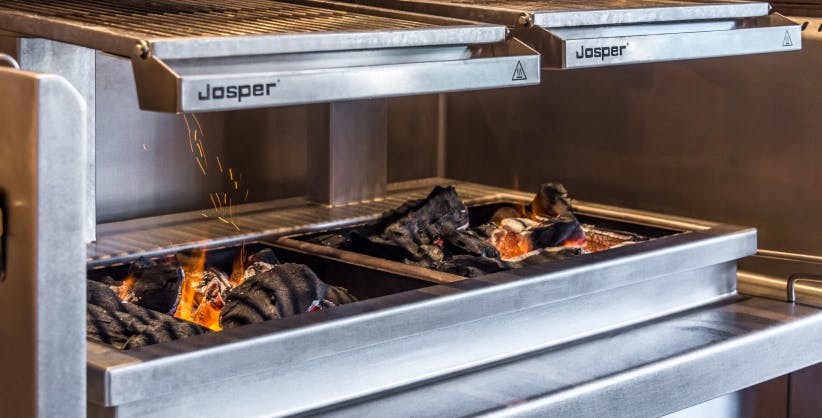Steak House Prague
We will guide you
Are you eager to learn how to select the perfect meat for a delicious steak and how to prepare it just right?
You've come to the right place! Here, you'll also discover how we do it – where our meat comes from and how we take care of it before it reaches your table.
Our meat is USDA certified, which means it must meet up to 8 standards, the main ones being:
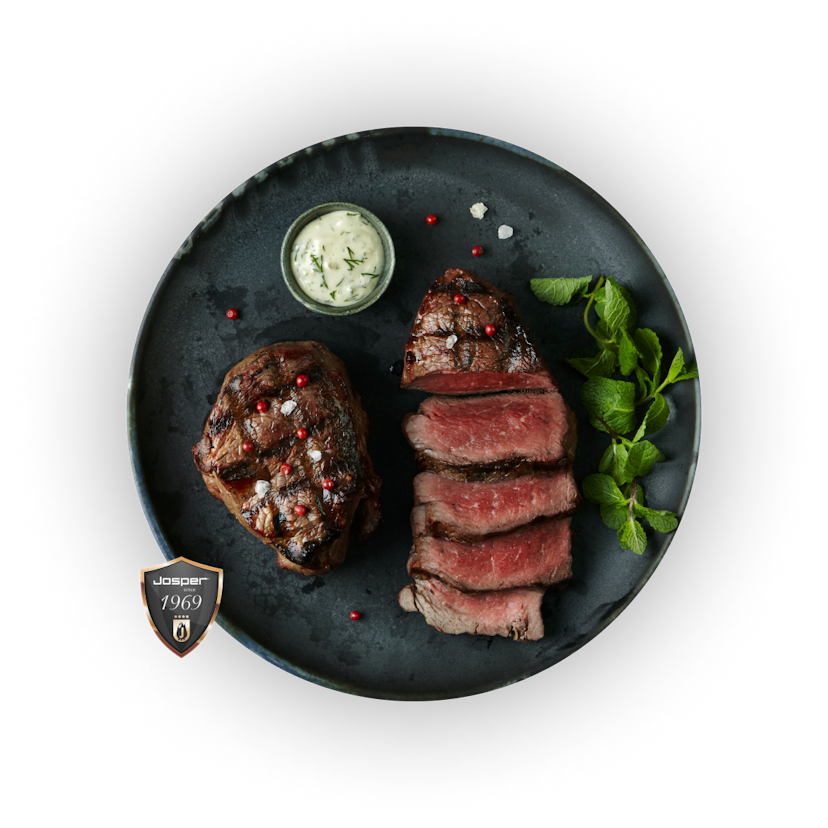
The meat must have a moderate to high degree of fat marbling, only 30 % from slaughtered cattle meets this standard
Meat must be in the "A" category, what is the youngest stage of maturity and guarantees better meat colour, texture, firmness and tenderness.
The yield of the cattle must not exceed grade 3, where 1 is the leanest and 5 the fattest cattle - i.e. the meat doesn´t contain excessive amount of subcutaneous fat.
The meat has a medium to slightly marbled texture, this influences the tenderness and palatability of the meat.
USDA certification is granted by the U.S. Department of Agriculture, indicating that the meat is suitable for distribution to other countries. The meat comes from ANGUS cattle and is rigorously graded, meaning that meat labeled with this certification is of the highest quality and flavor on the market.
Once the meat arrives from the supplier, it is necessary to determine how it will be stored. If we want to 'age' it, it is essential to decide which way to age the meat, whether 'dry-aging' or 'wet-aging'.
Dry-aging
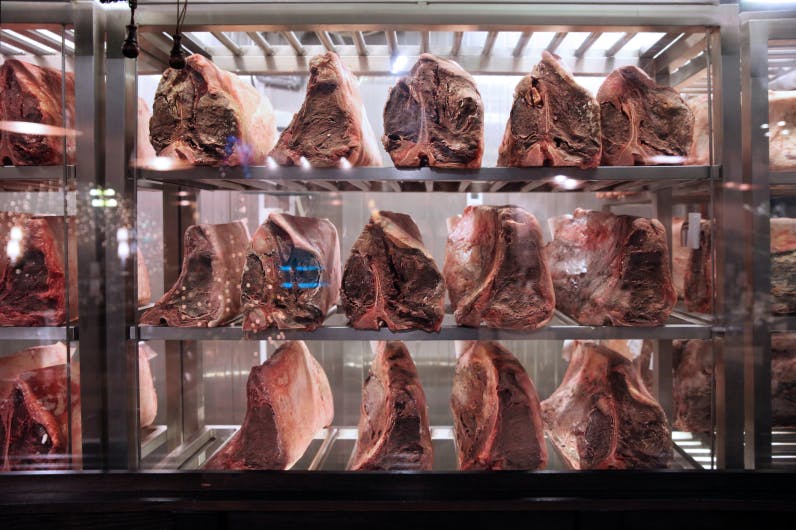
The meat is matured in special refrigerators, 'dry-ageing fridges', at a temperature of 0-1 °C with an ambient humidity of 75 %. The humidity in the fridges is created by bricks of Himalayan salt placed at the bottom of the fridge. Our meat is aged for 30 days, giving it a milder taste, making it more tender and getting rid of excess water.
Wet-aging
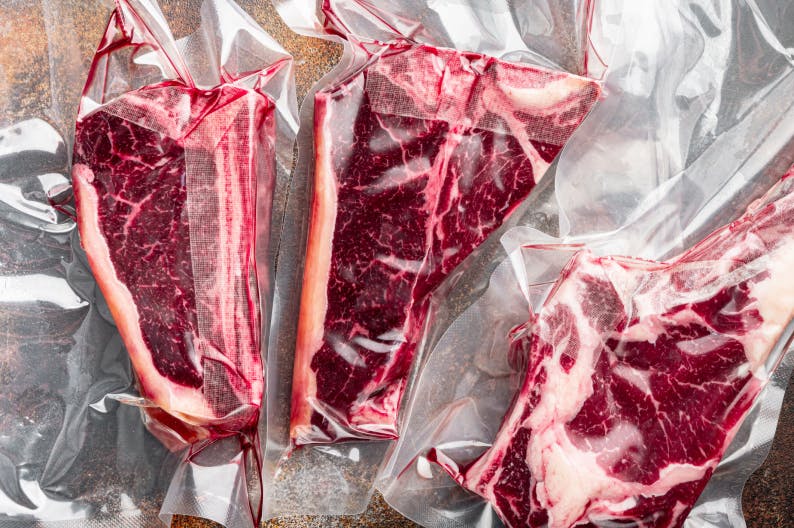
The meat is aged in vacuum-sealed packaging for up to two months at around 2°C. It has a much lesser impact on the taste compared to dry aging.
We will prepare for you
Rubia Gallega s certifikací IGP
An amazing and unique type of beef, nicknamed the “Galician blonde,” comes from Galicia – the beautiful, lush green region in the northwest of Spain, where the cattle graze for years on fresh pastures, usually at altitudes above 500 m. While USDA beef cattle are typically slaughtered at 18 to 24 months of age, resulting in tender and soft meat fibers, the finest Rubia Gallega cattle are usually processed at 7 to 8 years of age.
The result is beautifully marbled meat with a rich layer of delicate yellowish fat around the edges, giving it an exceptionally smooth and full flavor. The unusually high age brings a deep, mature taste. Rubia is slightly less tender than USDA, but makes up for it with its more intense beef flavor.
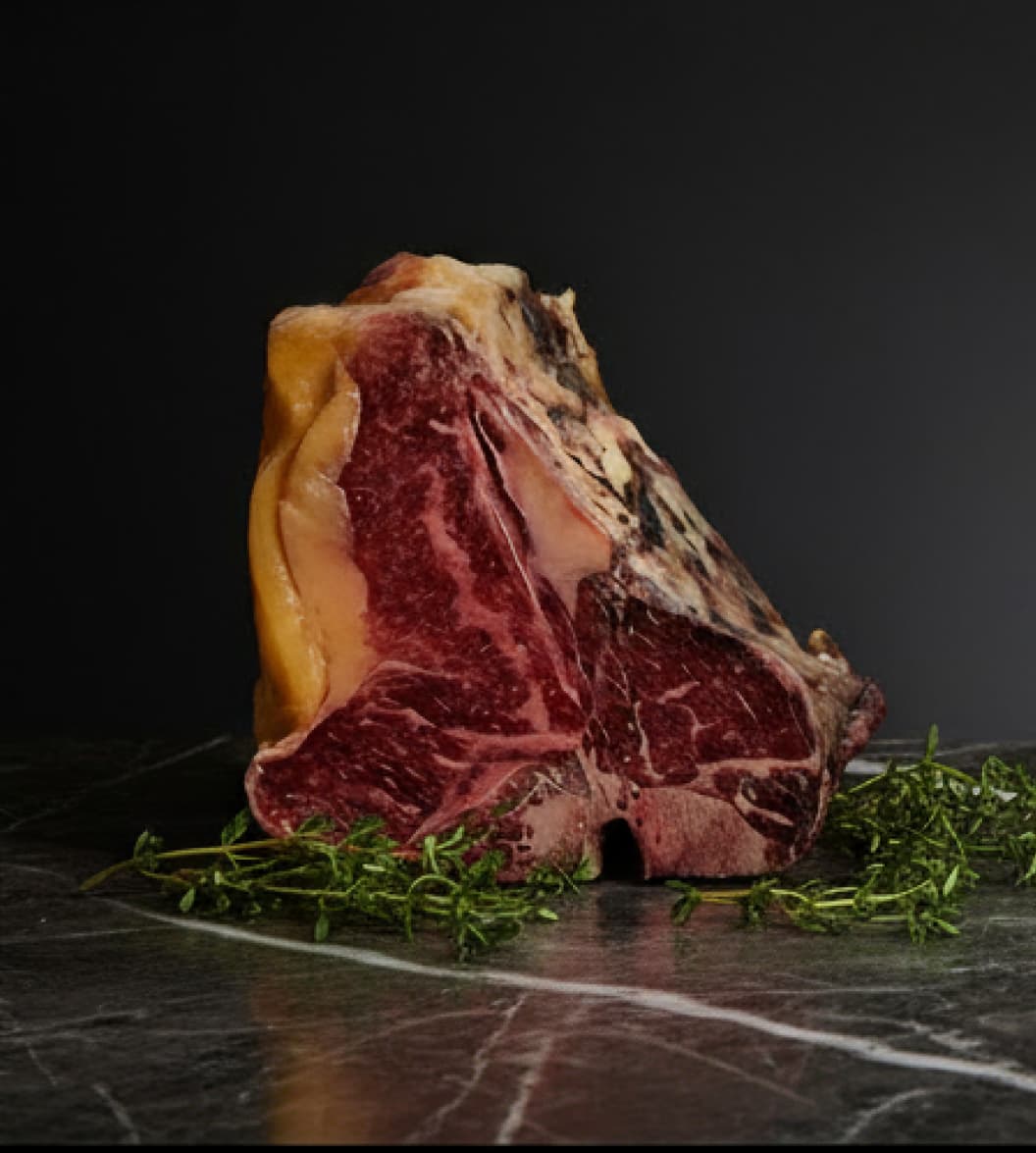
IGP is a European system for the protection of agricultural and food products that guarantees the product comes from a specific geographical area. It also ensures that it has a certain quality, reputation, or characteristics linked to that place, and that at least one stage of production takes place in the designated region.
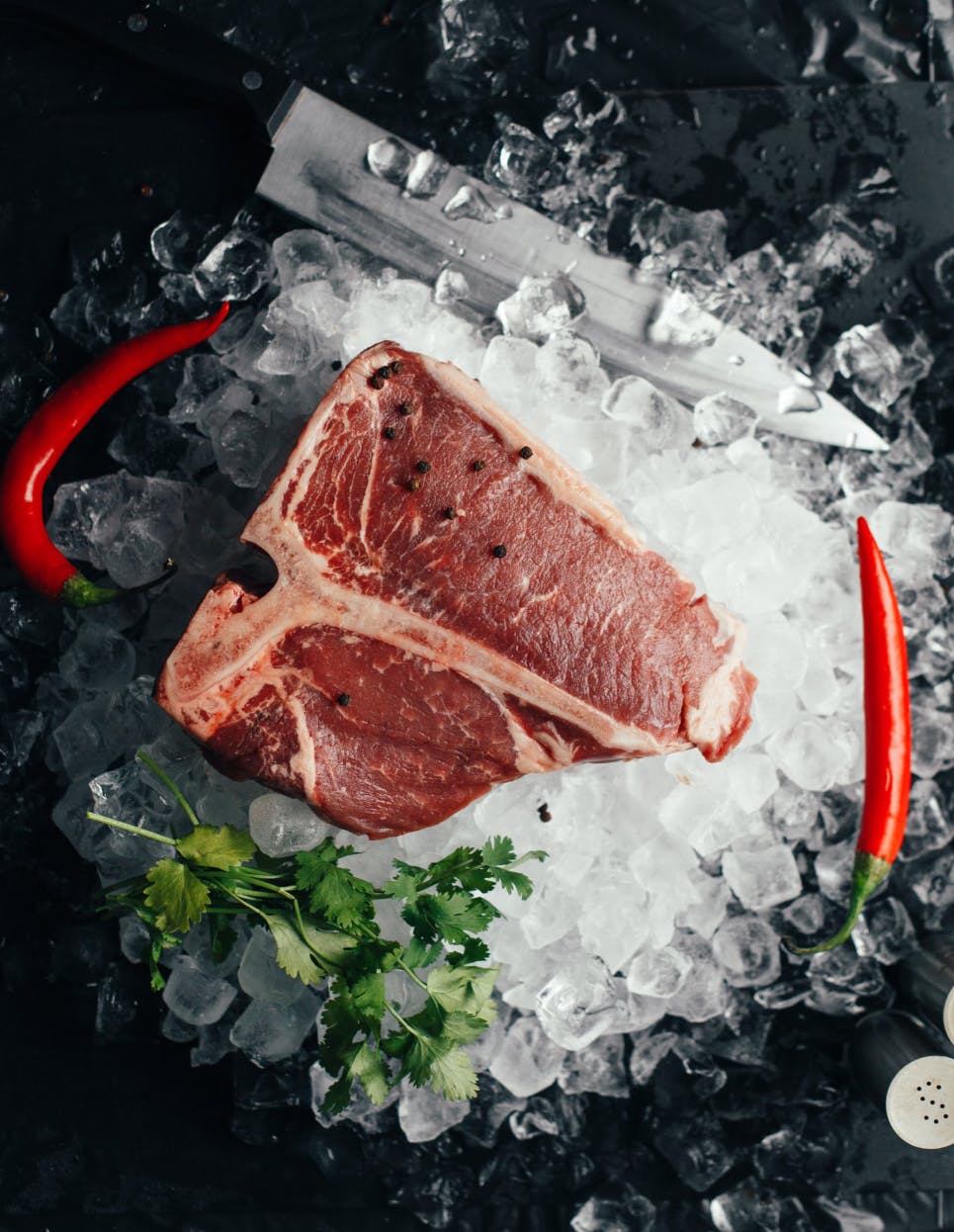
We will advise you
Good meat is the cornerstone of any great meal!
Good meat is the cornerstone of any great meal! Don't hesitate to opt for a quality cut of beef instead of the usual chicken or pork. It's not only considered a healthy and nutritious option, as it's rich in protein, but also the top choice for crafting exceptional steaks. And when it comes to quality, don't cut corners, especially with beef.
We evaluate meat quality in several aspects. Pay attention to freshness and the specific cut you choose. Give preference to counter sales over pre-packaged products in reputable stores where you can find knowledgeable butchers who will assist you in your selection.
If possible, choose meat from animals raised in favorable conditions, such as access to pasture, high-quality feed, regular veterinary check-ups, and more.
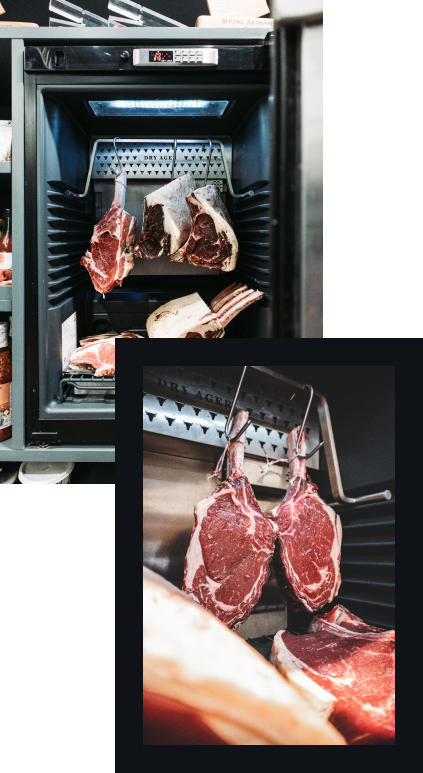
We will advise you
Age Matters!
Meat intended for grilling should be tender above all else. Several factors contribute to this tenderness, from the choice of breed, husbandry, and nutrition to the slaughter process. However, the aging period is particularly crucial. The longer beef matures under the right temperature and humidity conditions, the more tender it becomes. After slaughter, meat goes through rigor mortis, which occurs approximately four days after the animal is killed. This means you can either consume the meat right after slaughter or wait for it to mature. To alleviate rigor mortis, whole sides of beef are hung (for approximately 1-2 weeks, depending on the processor).
The ideal age for cattle at slaughter is around 12 to 14 months. You can recognize younger beef by its lighter color and finer muscle fibers when cut. Such meat is generally tougher. Quality butchers should offer aged meat so that you can savor its specific aroma and tenderness. You can also assess the degree of maturity of your selected cut with a simple touch – pressing your finger into the meat should leave an impression without resistance. Don't be wary of lines of fat in the muscle, even thin ones. Marbled meat is the right choice, ensuring the juiciness and delightful flavor of the steak.
Once you've made your purchase, don't forget about proper storage. It's essential to store the meat in a cold environment as soon as possible after buying it. The ideal refrigerator temperature should be between 0-3°C. To maintain freshness and flavor, it's advisable to vacuum-seal the meat. If that's not an option, store the meat in a sealed container.
We will advise you
Which Beef Steaks Do We Recommend?
Beef is divided into hindquarters and forequarters. Generally, for steaks, meat from the hindquarters is used because it primarily comes from larger muscles, giving it excellent tenderness. On the other hand, beef from the forequarters comes from areas with fewer muscles. Depending on the type of meat used, you may come across various steak names.
A steak that combines the best of both worlds – the robust flavor of striploin and the silky tenderness of tenderloin. The bone in the center adds depth of flavor, and with a larger portion of tenderloin than a T-bone, the Porterhouse rightfully holds its reputation as one of the finest steaks of all.
If you're uncertain about which meat to choose for your home grilling, try it with us first, and then you'll know which direction to take.
We will advise you
Doneness of the Meat
The provided times are relevant for approximately 1.5 cm thick slices of meat.
Just as you would be asked in any good restaurant where steaks are prepared how you'd like your meat cooked, it's essential to think about the degree of doneness at home. What does each term mean?
Very tender steak. Cooking time is approximately 1 minute on both sides. Steak temperature 46 to 48°C.
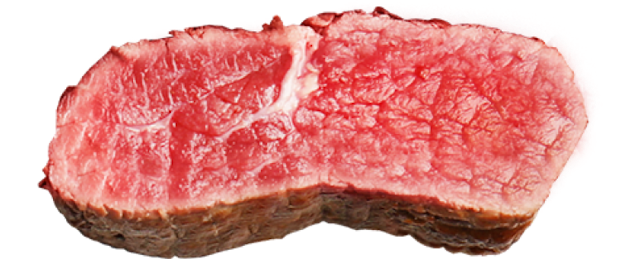
A bloody, very tender steak, about 2 minutes on each side. Steak temperature inside is 51°C.
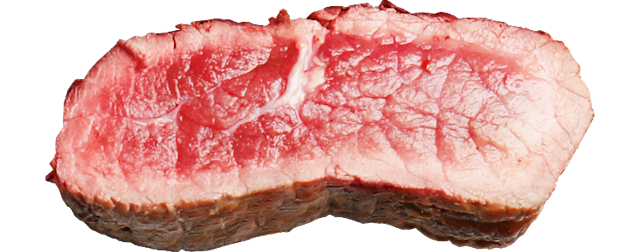
A medium rare steak, tender, cook for about 3 minutes on each side. Steak temperature inside is 54 to 56°C.
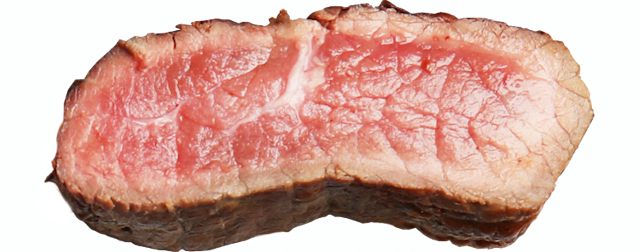
A medium-cooked steak, slightly firm, takes about 4 minutes on each side. Steak temperature inside is 61°C.
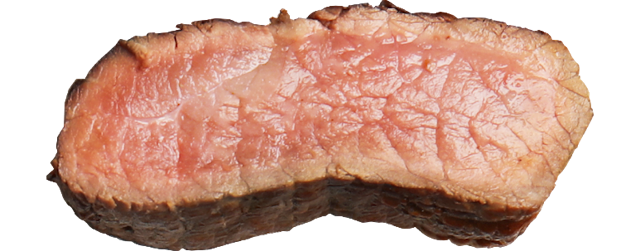
Nearly fully cooked steak, firm, prepare for around 4.5 minutes on each side. Steak temperature inside is 64 to 65°C.
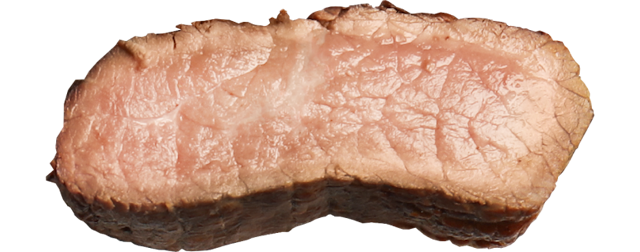
A seared steak, very firm to tough, takes about 5 minutes to cook on each side. The temperature exceeds 70°C. This treatment removes all tenderness and juiciness and renders the meat completely tasteless.

We recommend preparing the meat medium rare. This way, the meat retains its natural flavor and juiciness while being adequately cooked for consumption.
We will advise you
How to Properly Prepare a Steak?
Before you start preparing your steak, there are several essential principles to keep in mind. Fresh meat, especially on hot days, should be kept in the refrigerator or in a similar cool place with a constant temperature. However, this changes before the actual meat preparation – it's best to let it sit at room temperature for about an hour before cooking to avoid a significant temperature difference.
Individual meat portions should weigh around 200 grams when they're raw. Many of us also wonder about marinating meat. If you want to preserve the meat's natural flavor, there's no need to marinate it at all, as other seasonings can overpower the meat's taste. Before cooking, simply pat the meat dry and generously season it with salt. If you want to add pepper to your steak, we recommend doing so in the final stages since adding it too early can cause the pepper to burn and become bitter.
The simplest way to prepare steak at home is on a stovetop pan. If you choose this method, we recommend using a heavy cast-iron pan with ridges, as it retains the right temperature well. Make sure you have the necessary utensils for flipping the steak to ensure it's perfectly cooked on both sides. Choose your preferred cooking oil, as the oil's quality can significantly affect the final outcome. Don't hesitate to use oils other than olive oil, as olive oil is often unsuitable for high-temperature cooking. Different oils have varying heat stability, meaning the temperature at which they start to smoke. For steaks, you can try canola, peanut, avocado oil, or ghee. The oils also impart their unique flavors to the meat. Before you start, consider how well-done you want your meat to be.
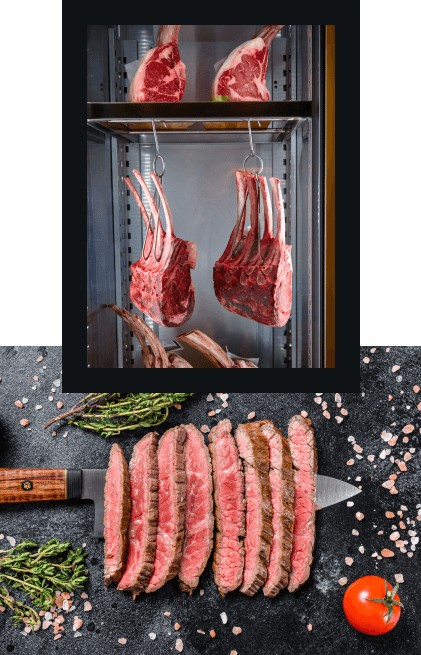
We will advise you
Methods of Preparation
If you have everything prepared, you can start. First, heat your pan to medium temperature. You can check if it's hot enough by adding oil to the pan; it's ready for the steak when the oil starts to smoke slightly. Once the pan is ready, pour in the oil, add the salted meat, and cook on both sides until it reaches your desired level of doneness. You can tell if the meat is done to your liking by touching it, but avoid cutting into it in the pan. It's crucial to let the steak rest. You can easily split its preparation into two phases. Ideally, let it rest for 15 to 20 minutes somewhere warm in the kitchen. Then, either place the steak back in the pan or in the oven at a temperature higher than 200°C to heat it to a consumable temperature. Resting is important for the meat to absorb its juices, which makes the meat tender, keeping it juicy without juices spilling out on the plate. If you wish, you can add salt and pepper to the finished steak.
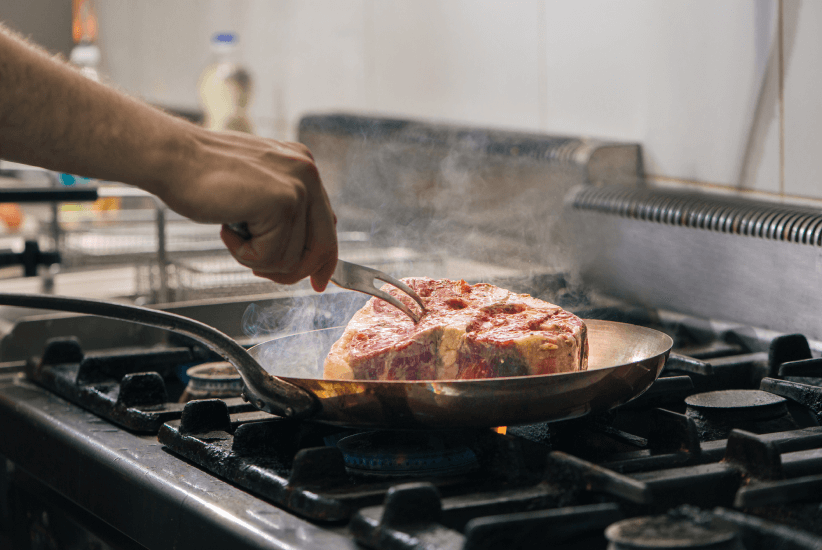
If you want to try a combination of stovetop and oven preparation, preheat the oven to 180°C. Follow the same steps as for stovetop cooking, with the difference being that you'll sear the meat vigorously on both sides, and then (approximately 2 minutes later), place it in a small ovenproof dish in a preheated oven. Continuously check the steak's elasticity by touching it with your finger, until you achieve your desired outcome; it will take approximately 4–11 minutes.
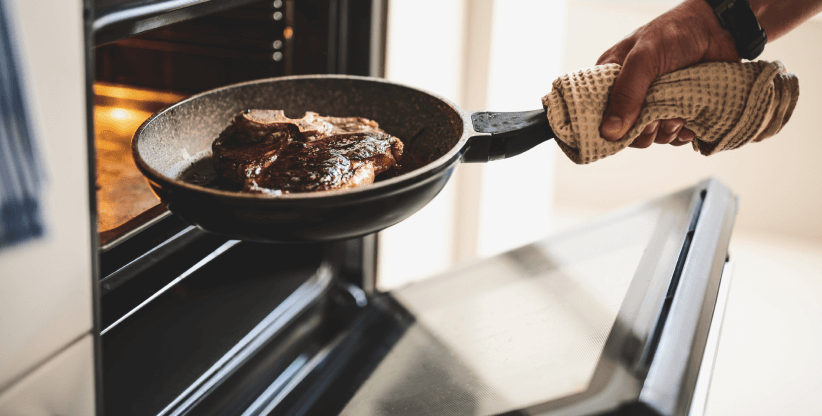
If you decide to grill the meat, begin by searing it on both sides for about a minute to a minute and a half. When the meat no longer sticks to the grill, it's time to reduce the flame. Grill the meat slowly at a lower temperature for about 15-20 minutes.
We take great pride in our Josper grill, where we prepare steaks for you. We use charcoal, and the temperature reaches up to 350˚C. It's made from a special steel alloy, and unique technology integrated into this device allows us to create dishes with truly exceptional flavor.
